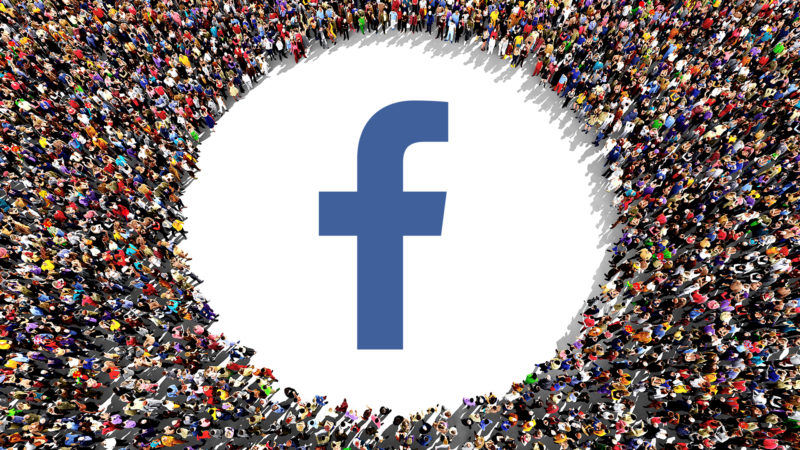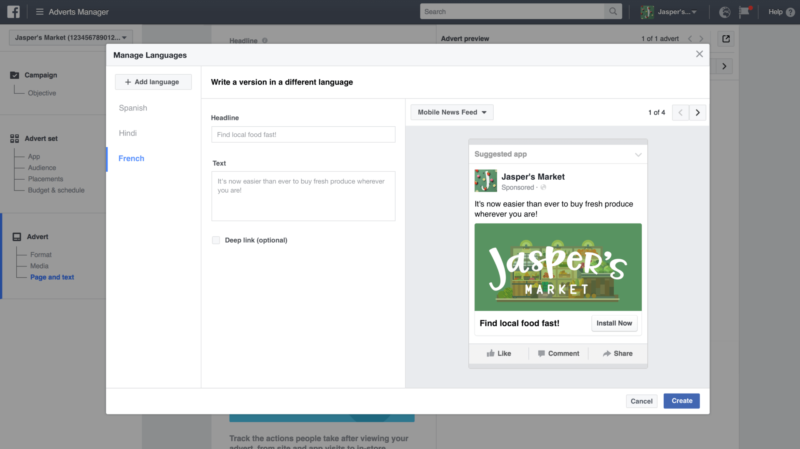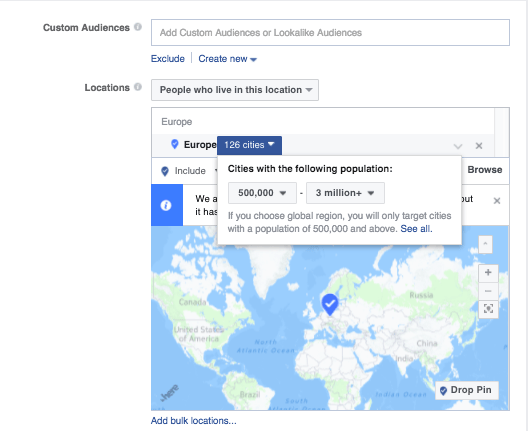Facebook makes it easier for advertisers to reach people internationally
Facebook has rolled out four new tools for brands to find and advertise to people around the world.

Advertisers can reach more than 2 billion people around the world through Facebook, but it’s hard to do so. So Facebook is trying to make it easier.
On Tuesday, Facebook rolled out new features to lower the barrier for brands to advertise internationally. The four new features span an option to streamline campaigns aimed at audiences that speak different languages to tools that can be used to find audiences that may be in many different places.
While Facebook’s new features are aimed at helping brands boost their businesses internationally, their aim is also to help Facebook’s international business. While 88 percent of Facebook’s monthly audience is outside of the US and Canada, roughly half of its ad revenue — 48 percent — comes from ads targeted to people in the US and Canada. To close that gap, Facebook needs to help advertisers bridge their campaigns elsewhere. Here are the new ways in which it is.
Dynamic language optimization

Advertisers want to communicate with people in their native tongue. But that simple idea is complicated to put into practice. For example, a campaign aimed at soccer lovers in the US might need to have English- and Spanish-language versions of its text even if all other elements of the ad is the same. Previously, the advertiser behind that single campaign would have needed to create two different campaigns because of the different languages in the ads. Not anymore. Through a new feature called dynamic language optimization, brands can configure a single campaign that features text in multiple languages, and Facebook will automatically show the version that corresponds to each audience member’s preferred language as set in their Facebook profile.
Multicountry lookalike audiences

Last year, Facebook enabled brands to take their Custom Audience lists and find so-called “lookalike” audiences of people who share similar characteristics but live in another country. However, brands had to repeat this process for every single country in which they wanted to find their lookalike audiences. Now, Facebook is removing that tedium by enabling brands to create lookalike audiences that span multiple countries or regions.
Multicity targeting

Sometimes brands don’t know which specific cities they want to target. They may only know the size of the cities they want to target. But now, through multicity targeting, brands can specify the population range of the cities they want to reach, and Facebook will automatically target the campaign to people in the cities that fit that parameter.
International audience finder
The aforementioned features are fine for brands that have at least a semblance of an idea of the international audiences they want to reach. But some brands are still searching for that basic insight. So Facebook is rolling out a fairly basic tool to find it. Using Facebook’s new Cross-Border Insights Finder, brands can pick the primary country they advertise in currently, their business’s industry and their campaign objective. Then Facebook will spit out a list of countries where similar advertisers have seen success, in accordance with how likely people in those countries are to convert, the relative cost of advertising in those countries and how competitive their respective ad markets are. Brands can also opt to hand-pick up to 11 countries to compare across a given industry and campaign objective.
Contributing authors are invited to create content for MarTech and are chosen for their expertise and contribution to the search community. Our contributors work under the oversight of the editorial staff and contributions are checked for quality and relevance to our readers. MarTech is owned by Semrush. Contributor was not asked to make any direct or indirect mentions of Semrush. The opinions they express are their own.
Related stories